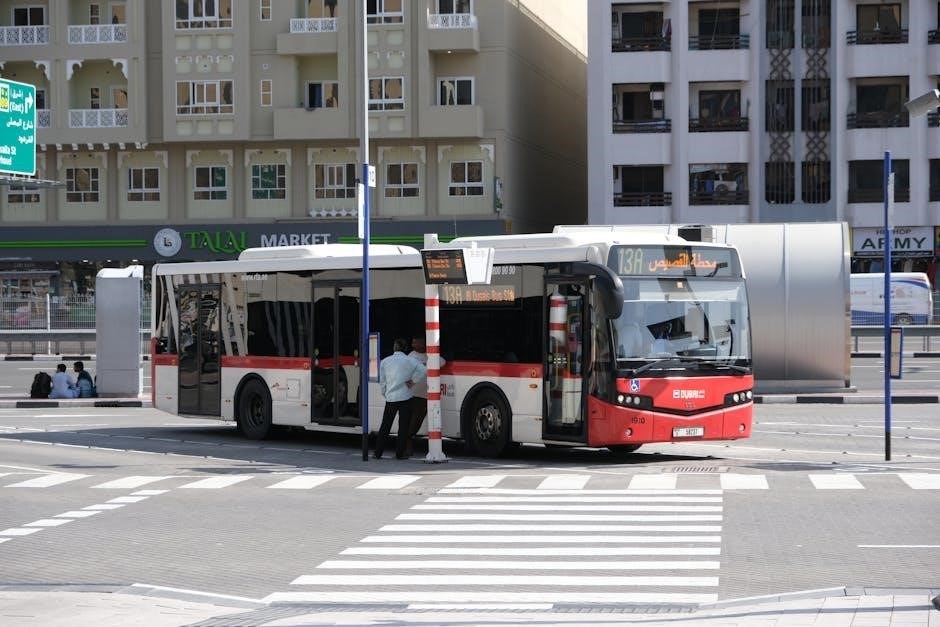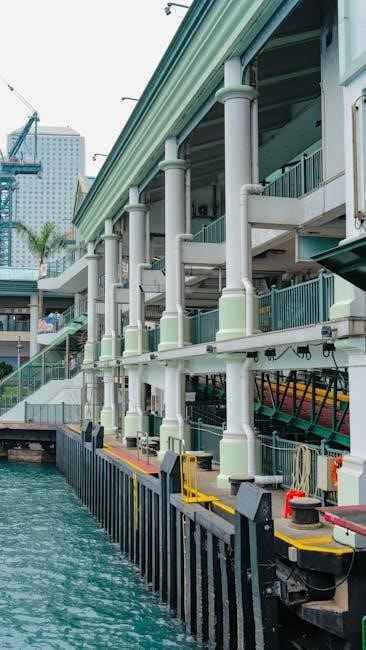Understanding the Issue of Long Images in PDF Exports
Long images in PDF exports often face truncation due to page size limitations. When an image exceeds the PDF page height or width, it gets cut off, losing visibility of the overflowed content. This issue arises from fixed page dimensions and layout constraints, making it essential to address how images are handled during export to ensure full visibility and proper formatting.
Common Scenarios Where Images Are Truncated
Images are frequently truncated in PDF exports when they exceed the page dimensions or layout constraints. A common scenario is when a tall image surpasses the PDF page height, causing the lower portion to be cut off. Similarly, images placed near the bottom of a page or within a multi-column layout may overflow and lose visibility. Another scenario involves DOM elements with scrolling content, where only the visible part is captured, leading to incomplete images. Additionally, automatic page breaks in PDF generation can split images awkwardly, resulting in partial rendering. These issues highlight the need for careful handling of image sizing and placement during PDF export processes.
Why Images Become Too Long When Exported to PDF
Images become too long when exported to PDF primarily due to mismatched dimensions and layout constraints. High-resolution or vertically oriented images often exceed the PDF page height, causing overflow. Additionally, content overflow from surrounding elements can push images beyond the page boundaries. DOM scrolling issues may also contribute, as only the visible portion is captured, leading to incomplete rendering. Furthermore, fixed page breaks in PDF generation can split images awkwardly, resulting in partial display. These factors emphasize the importance of adjusting image sizes, optimizing layouts, and implementing proper page break strategies to ensure images fit correctly within PDF exports.
Causes of Image Truncation in PDF Exports
Image truncation occurs due to page size limitations and content overflow, where images exceed the defined PDF page dimensions or layout constraints, causing partial display;
Page Break Limitations in PDF Generation
PDF generation often struggles with content that exceeds predefined page dimensions, especially when dealing with long images. The fixed nature of PDF page sizes means that content overflowing these boundaries is truncated unless properly handled. Images taller than the page height are particularly prone to being cut off, as PDF exporters may not automatically split or adjust content. To address this, manual page breaks can be inserted before long images to ensure they start on a new page. Additionally, adjusting margins or using pagebreak modes like “avoid-all” can help prevent unwanted splits. These strategies ensure that images are displayed in their entirety without being truncated during export.
Content Overflow Due to Layout Constraints
Content overflow is a common issue when exporting long images to PDF, often caused by rigid layout constraints. Fixed-width containers or inflexible margins can force images beyond the visible area, leading to truncation; This is especially problematic with responsive designs, where elements may not adapt well to PDF dimensions. To mitigate this, developers can adjust container widths or use percentage-based sizing to allow content to scale. Implementing “pagebreak: avoid-all” in stylesheets can also prevent unwanted breaks within images. Additionally, setting appropriate padding and margins ensures that images fit within the PDF page without overflow, enhancing the overall visual integrity of the exported document and preserving all content effectively.
DOM Scrolling and Visibility Issues
Solutions for Handling Long Images in PDF Exports
Implement manual page breaks, use pagebreak mode configurations like “avoid-all,” adjust layouts and margins, and split content automatically to ensure long images fit properly in PDF exports.

Implementing Page Breaks Manually

Manually inserting page breaks ensures long images fit within PDF pages without truncation. Use page-break CSS properties or libraries like jsPDF to control where breaks occur. By scanning pixel colors, you can detect truncation points and adjust image sizes or split content. This method allows precise control over layout, preventing overflow and ensuring images are fully visible. It’s particularly useful for complex layouts where automatic algorithms may fail. Setting background colors helps in detecting truncation points accurately. Manual breaks provide a reliable solution for maintaining image integrity in PDF exports, especially when dealing with dynamic or unusually sized content.
Using Pagebreak Mode: Avoid-All Configuration
The “avoid-all” pagebreak mode prevents content from being split across pages, ensuring long images remain intact. By applying this configuration, images that exceed page dimensions are automatically moved to the next page without truncation. This mode is particularly useful for maintaining the visual integrity of images in PDF exports. It works seamlessly with libraries like jsPDF, allowing developers to control page breaks dynamically. The “avoid-all” setting ensures that images are preserved in their entirety, enhancing the overall quality of the exported PDF. This approach is ideal for scenarios where image continuity is crucial, such as charts, graphs, or detailed visuals that should not be divided.
Adjusting Layout and Margins for Better Fit
Splitting Content into Multiple Pages Automatically

Automatically splitting content into multiple pages ensures that long images are not truncated in PDF exports. This can be achieved by implementing dynamic page break detection based on content length. Libraries like JSPdf offer configurations to handle content overflow by automatically creating new pages. Additionally, pixel scanning can detect truncation points, allowing precise splitting of images. This method ensures that images remain intact and fully visible across multiple pages, enhancing the PDF’s readability and structure without manual intervention.

Tools and Libraries for PDF Generation
Html2Canvas is a powerful library that converts HTML content into a canvas element, enabling accurate rendering of DOM elements as images. It captures the entire DOM structure, including styles and layouts, and converts it into a canvas that can be further processed. This tool is particularly useful for scenarios where precise visual representation is required, such as generating images for PDF exports. By leveraging Html2Canvas, developers can ensure that complex layouts, including long images, are accurately converted and formatted correctly, which is essential for maintaining visual integrity in exported documents.
JSPdf for Generating PDF Files
JSPdf is a popular JavaScript library designed for generating PDF documents in web applications. It provides robust tools for adding text, images, and shapes to PDF files, with precise control over formatting and layout. When handling long images, JSPdf allows developers to split content across multiple pages automatically or manually, ensuring that images are not truncated. By setting page dimensions, margins, and breakpoints, users can customize how images fit within the PDF. Additionally, JSPdf supports advanced features like page breaks, orientation changes, and image compression, making it an ideal solution for creating visually consistent and properly formatted PDF exports.
Html2Canvas and JSPdf are powerful tools that work together to create high-quality PDF exports. Html2Canvas captures the DOM content as a canvas image, ensuring accurate representation of web elements, while JSPdf handles the conversion of these images into PDF format. This combination is particularly useful for managing long images, as it allows developers to split content across multiple pages seamlessly. By setting page breaks and adjusting margins, users can ensure that images fit properly within the PDF layout. This approach maintains the integrity of the original content while providing flexibility in formatting. It is an ideal solution for scenarios where both text and images need to be exported without truncation, ensuring a visually consistent and professional output.

Advanced Techniques for Image Handling
Advanced techniques include scanning pixels to detect truncation points and setting background colors for better image processing. These methods ensure images fit seamlessly in PDF exports without losing content.
Scanning Pixels to Detect Truncation Points
Scanning pixels to detect truncation points involves analyzing image data to identify where content is cut off. By converting the DOM to a canvas and generating an image, developers can scan pixel colors from the suspected truncation point upward. When a row of fully white pixels is detected, it indicates the start of the truncation. This method ensures accurate detection and allows for adjustments, such as splitting the content or resizing, to prevent data loss in PDF exports. This technique is particularly useful for dynamic content and ensures that all information is preserved and properly formatted in the final PDF document.
Setting Background Colors for Better Image Processing
Manual Truncation Detection and Correction
Manual truncation detection involves scanning image pixels to identify where content is cut off during PDF export. By setting a background color, developers can scan upward from the truncation point to locate the first fully visible row of pixels. This method ensures accurate detection of where the image is being truncated. Once identified, corrections can be made by adjusting page breaks or resizing the image. While manual detection is time-consuming, it offers precise control over the final output. This approach is particularly useful for critical documents where automation may not suffice. Regular testing and adjustments are necessary to maintain consistency and quality in the exported PDF files.

Best Practices for PDF Export
Optimize image sizes and resolution to prevent truncation. Avoid complex layouts and test exports thoroughly. Use pagebreak mode settings to ensure content fits seamlessly across pages.
Optimizing Image Size and Resolution
Avoiding Complex Layouts in PDF Exports
Avoiding complex layouts is essential for smooth PDF exports. Intricate designs, such as multi-column layouts or nested elements, can confuse PDF generators, leading to content misplacement or truncation. Simplifying the layout ensures that images and text are exported correctly. Using single-column structures and avoiding unnecessary nesting helps maintain content integrity. Additionally, reducing the number of floating elements and ensuring proper alignment prevents overflow issues. By streamlining the layout, you can avoid unexpected truncation and ensure that all content, including long images, is exported as intended. This approach minimizes errors and enhances the overall readability of the PDF document.
Testing and Previewing Before Final Export
Testing and previewing are crucial steps before finalizing PDF exports. By generating a preview, you can identify truncation issues early, ensuring images and text fit within page boundaries. Utilize tools like JsPDF to create temporary PDFs for review. Check image resolution and layout adjustments to confirm content appears as intended. Pay attention to content overflow, especially with long images, and adjust page breaks or margins if necessary. Conduct cross-page checks to ensure images span correctly without being cut off. This iterative process saves time by addressing issues before the final export, ensuring a polished and professional output free from truncation errors.
Real-World Applications and Examples
Long images in PDF exports are commonly seen in reports, brochures, and technical documents. For instance, charts, graphs, and infographics often exceed page limits, leading to truncation issues. Real-world examples include financial reports with lengthy charts, medical records with detailed images, and educational materials with diagrams. These scenarios highlight the need for efficient handling of long images to maintain readability and professionalism in PDF outputs.
Exporting Charts and Graphs Without Truncation
Handling Text and Images Together in PDF
Case Studies of Successful PDF Export Implementations

Future Trends in PDF Generation

Future trends include enhanced page break algorithms and improved dynamic content support. Advances in AI-driven layout adjustments and real-time preview capabilities will optimize long image handling and reduce truncation issues.

Enhanced Page Break Algorithms
Enhanced page break algorithms aim to intelligently detect and handle content overflow, particularly with long images. These algorithms automatically adjust page breaks to prevent truncation, ensuring images fit seamlessly across pages. By analyzing content layout and dimensions, they optimize spacing and margins, minimizing manual adjustments. Advanced versions can even split images dynamically, maintaining visual integrity. This innovation addresses common issues like truncated graphics and improves PDF readability. With smarter page break logic, users can export documents confidently, knowing content will display correctly. These algorithms adapt to various document types, from reports to brochures, making PDF generation more reliable and user-friendly. Enhanced page breaks are a key advancement in PDF export technology.
